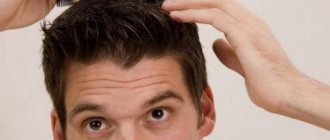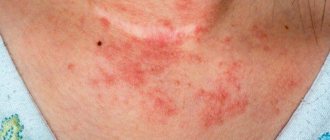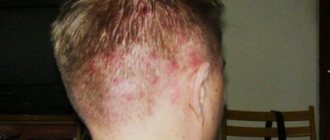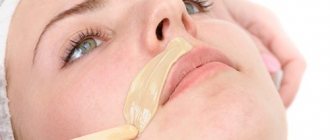Total alopecia is a disease that causes severe hair loss. For various reasons, baldness occurs in men, women and even children. A very unpleasant result of the disease, in addition to baldness, is that the person’s hair remains everywhere.
After some time, if the hair loss is higher than normal (for everyone, the normal hair loss rate is determined individually, but general standards can be found in online sources), unpleasant bald patches appear. If the problem of partial baldness is not resolved in time, then complete baldness occurs. Everyone chooses for themselves how to live with total alopecia. This disease forces people to hide their illness in various ways (scarves, baseball caps, wigs). However, you can try to solve this problem with the help of known types of treatment.
Features of total alopecia
The peculiarities of total alopecia are that complete hair loss occurs, and sometimes hair is lost throughout the entire body. It can occur not only in those who have undergone chemotherapy courses, but also in people who are at risk.
It has been proven that total alopecia is much more common in men than in women. This is due to changes in the hormonal system and occurs at different times for everyone. Baldness occurs in 20% of cases in people with a genetic predisposition. However, the occurrence of the disease is not necessarily associated with hereditary characteristics. It can be provoked by poor nutrition, severe stress, as well as the use of antibiotics and hormonal drugs.
How it manifests itself
Normally, a person loses up to 100 hairs every day, but with progressive alopecia this number can reach 1000. and more. With pathology, the life cycle of hair follicles is disrupted, they cease to fully nourish the hair and go into dormant mode. The bulbs do not die off, so the processes in them can be started.
Diffuse alopecia in women occurs in two basic forms:
- Telogen effluvium hair loss. The most common type of alopecia, when up to 80% of hair follicles go into a dormant state much ahead of time, stop nourishing hair and forming new ones. In a healthy person, this figure does not exceed 15–20%. Loss occurs gradually and may take several years.
- Anagen alopecia. An intensive process of baldness occurs throughout the entire head. Not only old, but also young hair falls out. More often it occurs against the background of a serious impact on the body of unfavorable conditions - radiation, poisoning, chemotherapy treatment.
Symptoms
The first signs of total alopecia are rapid hair loss in men, women and children, as well as changes in the nail plates. There are cases when the disease quickly covers areas of the skin and in 3-4 months you can become almost completely bald. Hair falls out gradually, usually starting from the scalp, then moving to the groin, armpits and eyebrows, gradually affecting the entire body.
Complete baldness begins with a focal form. There is a special risk group: it includes teenagers (due to changes in the hormonal system), children under 1 year of age, men over 40 years of age, and women during menopause.
First signs
It is worth noting that this type of pathology is observed in abundance in females, which is explained by the peculiarities of the processes occurring in the human body, depending on gender. The rarest cases of such disorders were found in children and adolescents. The main symptom of diffuse hair loss in women and men is uniform baldness of the entire surface of the head, along with this, doctors note: 1. Widening of the parting. You can observe a sluggish increase in the epidermal line, or a sharp detection of the lumen of the skin of the scalp. 2. Hertog indicators. In this case, the symptoms are described by thinning of the skin and loss of eyebrows or eyelashes. 3. Deterioration of the condition. The strands often begin to break, get tangled, become significantly dull and change their shade, making it possible to easily pull out a hair.
Please note that if you notice several or at least one symptom, sign up for a consultation with a trichologist and undergo an examination in order to prevent a deterioration in your health.
Causes
Scientists have not yet figured out the causes of total alopecia. However, there are factors that help the disease develop, for example:
- taking strong antibiotics, medications, hormonal drugs;
- congenital underdevelopment of hair follicles;
- genetic predisposition or autoimmune diseases (the body's cells are perceived as foreign, then the immune system puts all its efforts into getting rid of them, and as a result the body kills its own cells);
- previous severe infectious diseases, diseases of the gastrointestinal tract, failure of the endocrine system or thyroid system;
- severe shock, depression, stress.
Stages
Total alopecia is the final stage of alopecia and develops in stages:
- Hair begins to shrink, becomes more brittle and falls out more than usual.
- The appearance of bald patches and the appearance of fuzz in those places where there was previously hair.
- Complete baldness. With rare exceptions, the disease progresses quickly; complete baldness is possible in 2 to 4 months.
Complete baldness occurs after focal baldness, since the bald patches seem to unite with each other, thereby increasing the area of baldness. Seeing a doctor is necessary if:
- excessive hair loss has been noticed;
- bald patches appear;
- intense hair loss lasts more than two weeks.
Mesotherapy
Mesotherapy is one of the most effective ways to treat alopecia. Using the mesotherapy method, the drug is injected under the skin. The serum contained in the drug helps awaken dormant hair follicles and also stimulate the growth of the hair shaft.
Mesotherapy is very often used to increase hair thickness, improve its strength, and give it shine and shine. After mesotherapy, even clients with total alopecia experience improvements. Therefore, this procedure can be used both for the treatment and prevention of various scalp diseases.
The composition, as well as the concentration of the active ingredients of the serums differ. Almost every serum includes components such as hyaluronic acid, vitamins, plant extracts, extracts, minerals, amino acids, and glucocorticoid hormones. All these components help increase hair growth, as well as improve their quality and quantity.
The entire medicinal cocktail is injected under the skin in several ways:
- Manual – the doctor performs mesotherapy himself.
- Hardware – the supply of the drug is carried out by a special device.
The number of punctures, as well as the depth of insertion, is strictly regulated by the doctor and is done under his strict supervision.
Photochemotherapy
The most famous method of photochemotherapy is PUVA therapy. This method is common in the treatment of many skin diseases. For quite a long time, it was believed that PUVA therapy was ineffective for total baldness. However, new studies have proven that PUVA therapy in combination with EHF therapy shows a high cure rate of 39.4%. Photochemotherapy together with medications, as well as measures aimed at restoring hair growth, helps achieve such results.
To treat the disease, a special comb with phytoactive enhancers is used. The course consists of 10 procedures, and they need to be repeated every three months until positive dynamics appear, which is confirmed by a trichologist.
Laser therapy
Laser therapy is actively used in therapy to treat diseases. It is used in various conditions of alopecia, including total alopecia. If laser therapy is carried out comprehensively, the following improvements appear:
- Metabolic activation.
- Increased regenerative and reparative properties of the scalp, which affect not only hair growth, but also its quality.
- Increasing local immunity.
- Increasing the proliferative capacity of skin cells (proliferation of skin cells by dividing them).
Complete treatment, in which visible improvements appear, consists of 12-15 procedures, the interval between which should not exceed 48 hours. Secondary courses are carried out no earlier than 60-90 days from the date of previous treatment.
Diathermy or pulsed currents
An outstanding and effective method of electrotherapy is a targeted effect on the scalp with pulsed currents. Improvement in the scalp of the skin occurs during the acupressure procedure not only with partial, but even with complete baldness.
The treatment is carried out as follows: the doctor moves a special electrode along the surface of the patient’s scalp, through which weak pulsed high-frequency currents are supplied. They activate skin cells and also have a beneficial effect on hair follicles.
This effect is achieved by improving lymph and blood circulation, normalizing tissue nutrition, and activating immune function.
It is most effective to use not only the pulsed current method, but also combine it with other methods of physiotherapy, for example, ultraviolet or laser irradiation.
EHF therapy
EHF therapy is one of the most effective methods for treating various stages of baldness. The technique involves irradiating the scalp with low-intensity electromagnetic waves.
The spectrum of therapeutic activity of EHF therapy is huge, its results:
- Restoration and improvement of the activity of the autonomic and neuroendocrine systems. They are responsible for regulating the hair cycle; after normalizing these systems, the stages of their growth are improved and normalized.
- Nonspecific resistance increases.
- The rheological properties of blood improve and homeostasis normalizes.
- The opiatergic regulatory system is activated.
However, EHF therapy has a drawback - the time that needs to be spent on the procedure. The course consists of 20 procedures that must be performed daily, and a repeat course must be completed after 3 months.
Physiotherapy
Such treatment is reflected in the prescription of a set of procedures that do not harm health. ● Iontophoresis; ● Scalp massage with essential oils; ● Microcurrent therapy; ● Mesotherapy.
Undergoing physical therapy has a number of advantages: ● targeted impact with the likelihood of affecting a certain area of the skin; ● does not cause allergies; ● increasing the duration of remission; ● possibility of use in a complex.
In addition, a specialist may suggest the use of infrared rays, nitrogen, paraffin and acupuncture.
What other methods are used to treat total hair loss?
Modern hair experts have a large number of techniques that allow them to treat total alopecia, achieving excellent results.
In addition to the methods listed above, the patient may be offered the following procedures:
- mud therapy;
- halotherapy;
- ultraviolet irradiation with medium and short wavelengths;
- balneotherapy;
- paraffin applications;
- massage, cryomassage with liquid nitrogen;
- vacuum therapy;
- hydrotherapy;
- infrared irradiation.
In addition to treatment, various serums, organic shampoos, as well as solutions with active substances, tablets, and sprays containing minoxidil, which helps stimulate hair growth, can serve.
Treatment prognosis
Patients undergoing treatment for total alopecia must normalize their daily routine, eat properly and establish a diet necessary for the patient’s age, and normalize their rest regimen.
Patients are advised to walk a lot in the fresh air, eat plenty of fruits and vegetables, and drink vitamins. To prevent recurrence of the disease, it is recommended to consume foods that contain natural sources of collagen and hyaluronic acid.
It is necessary to avoid situations that can cause stress and inadequate physical activity. It is also necessary to normalize sleep so that the body feels rested and stress does not arise due to chronic lack of sleep.
If the patient regularly monitors his own health, regularly monitors the condition of his hair, and does not forget to consult a doctor in case of symptoms, then the problem of baldness is solved at the initial stage of its appearance. If the patient has a genetic predisposition to total alopecia, then it is necessary to regularly visit a doctor (trichologist). After identifying the problem, the specialist will prescribe the correct treatment, as well as the correct hair care in a specific situation.
Prevention and prognosis
Diffuse alopecia in women can be treated quite successfully if it is started on time. The main thing is not to ignore alarming symptoms and immediately contact a trichologist.
Long-term action of the provoking factor significantly reduces the favorable prognosis. This is due to the fact that over time the bulb gets tired and weakens. If at some point the follicle and sebaceous gland stop working, recovery will be impossible.
With therapy, hair loss stops after 2-3 months, and growth will be restored after about 8-9 months. Metabolic reactions are gradually normalized, poisoning of the body and its consequences are eliminated, vital substances accumulate to normal levels. Since hair grows by about 1 cm per month, it will take time to restore beautiful and thick curls.
How to prevent diffuse baldness:
- Eat well and properly. If you have radical food preferences or intolerance to certain foods, monitor the level of vitamins and microelements;
- Don't starve yourself or choose strict diets. This approach to losing weight is fraught with serious health problems, deterioration of immunity and the development of systemic or inflammatory diseases;
- protect yourself from stress and anxiety, learn to avoid toxic communication, look for inspiring hobbies;
- take care of your hair and handle it with care, do not use a hair dryer and straightener every day, buy a soft massage comb, color only in a salon from professional hairdressers and do not do it too often;
- regularly conduct independent medical examinations so as not to miss the prerequisites for pathology;
- do not self-medicate even if you think you know effective remedies. The cost of error is too high.











